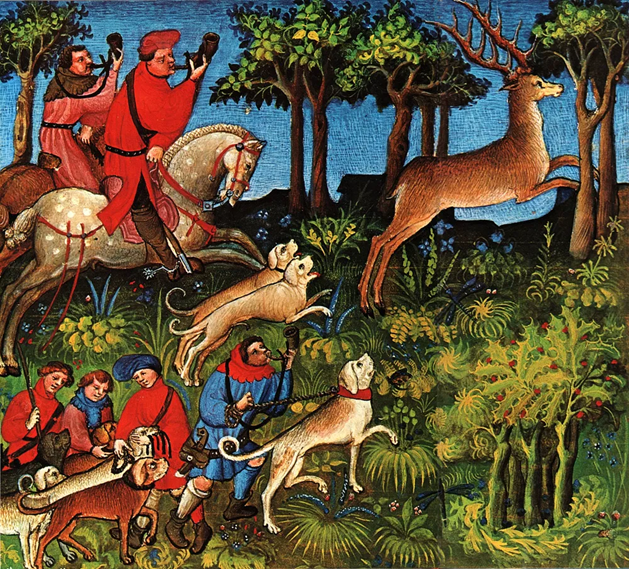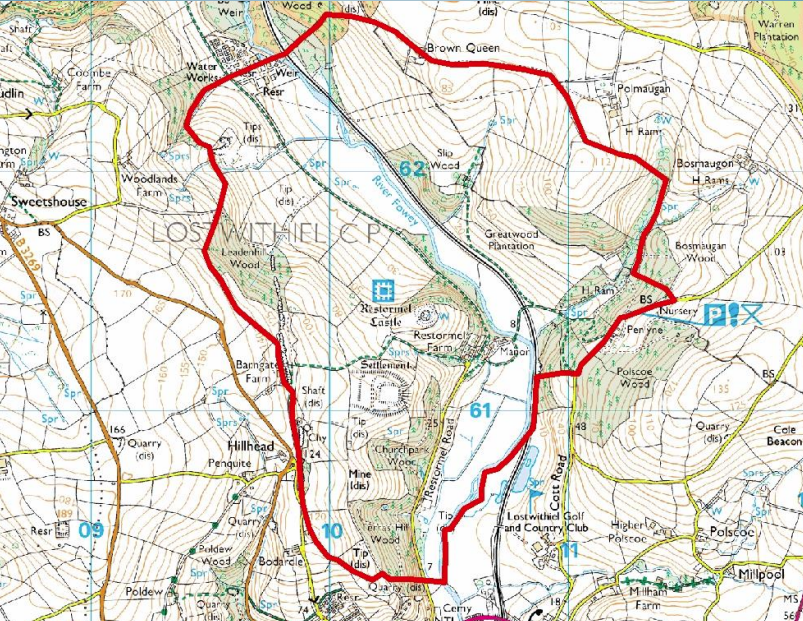What Three Words: ///shack.statement.hidden
OS Grid Reference: SX104608
Little now survives of the once extensive deer park and hunting forest that surrounded Restormel Castle.
The location on the Restormel Road, just before the approach to Restormel Manor, places you at the centre of what was once a heavilly forested deer park, or Royal Forest, covering the extensive area shown on the map below. In 1337 this deer park contained 300 fallow deer and was the largest in Cornwall. It contained warrens and protected areas not only for deer but also for wild boar, rabbits and other animals to provide hunting and sport for the Earls, and later, Dukes of Cornwall. Hunting was the principal sport of the nobility and relied on the use of large, heavily built dogs called Talbots that were kept in kennels on the site now occupied by Restormel Manor. The deer were managed by a keeper, paid 11d a day, and the herd was kept both for hunting and to supply venison to the castle. The 16th Century antiquarian John Leland reports that remains of ancient tin working had been discovered in the park.

By the mid-16th Century, the castle had fallen into disrepair and, as there were a number of other hunting parks in the area. It was dis-parked by Henry VIII along with deer parks at Lanteglos, Liskeard, and Stoke Climsland. The timber was uprooted and the land given over to the grazing of cattle. It was at this time that a farmhouse was built near the site of the Holy Trinity Chapel and the Talbot kennels. Rebuilt in the 18th Century, this is now Restormel Manor. The Manor remains in the hands of the Royal family and is let out as holiday accommodation. Formal gardens remain behind the high walls, but these are not open to the public
Much of the area is now planted with coniferous trees, managed for timber production. A small area of the parkland below the Restormel Road has recently been replanted with native trees.

The full extent of the original deer park
The establishment of this wooded forest attached to the Castle perhaps explains the origin of the name given to Lostwithiel. Find out more